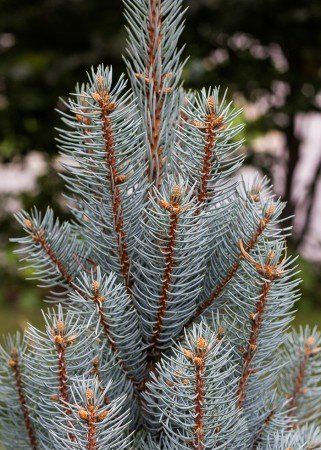
I gave myself a shock this week by removing a large fern-leaf beech (Fagus sylvatica var. heterophylla ‘Aspliniifolia’, Zone 6) from the front garden, but it did reveal the possibility for some front garden design changes. I was sorry to lose a beautiful tree, but my acquisitive nature had come back to haunt me, and it had to go.
Initially, I was eager to have this tree where I could enjoy it everyday, and I allowed my enthusiasm to override the reality of its eventual size — 53 by 43 feet (16 x 13 m). I thought my pruning skills would be sufficient to control its development. (Absolutely not!) No matter what rough justice I applied with a pruning saw, the light and space its aggressive growth required damaged neighbouring plants. Other trees were bending and shying away as the beech reached out to invade their spaces. It was a hard decision to finally take the beech down, but once done, I was pleasantly surprised by the revelation of space the tree had concealed. Neighbouring woody plants were suddenly more prominent, and now there is space for additional plants in the front garden. But one important point: new woody plants will be dwarf varieties.
This time, I’ll be strict with myself. The potential mature height and spread of new plants must work in the available space. The fern-leaf beech was too big in every way, and I might have had equal satisfaction from an oak-leaf mountainash (Sorbus x thuringiaca ‘Fastigiata’, Zone 6, 7.5 x 3 m) with similar characteristics — small leaves with an interesting shape, rusty-orange autumn colour, clearly defined winter profile when branches are bare, and the bonus of dark red berries on the oak-leaf mountainash.
Plants with four seasons of ornamental features are hard to find, but it can be done. Dwarf conifers certainly offer year-round interest, especially if their form is interesting or they have a distinctive colour. Columnar blue spruce (Picea pungens ‘Iseli Fastigiate’, Zone 3, 16 x 10 feet / 5 x 3 m) is almost always sold as a small specimen, and sometimes with a substantial price tag. However, this bright blue conifer grows about eight inches (20 cm) a year when planted in a sunny location with rich organic soil and regular irrigation. ‘Iseli Fastigiate’ is a beautiful specimen to display prominently, and its narrow form and bright blue colour are strong features; the foliage darkens in winter, but the blue tinge is still apparent and beautiful in snow.
Another favoured dwarf conifer is ‘Degroot’s Spire’ cedar (Thuja occidentalis ‘Degroot’s Spire’, Zone 4, 10 feet x 20 inches / 3 m x 50 cm). Its extremely compact conical form is useful for framing a front doorstep or you could place two or three near each other (but not touching) to make a deep green focal point in a garden bed. Selecting ‘Degroot’s Spire’ shrubs of staggered heights will give a less formal look.
Now that I’ve learned my lesson the hard way, I’ll be looking for plants that satisfy more than my enthusiasm. They will be the right size and shape, because I don’t want to experience the loss of another beautiful tree.
